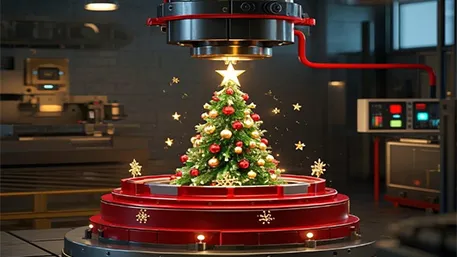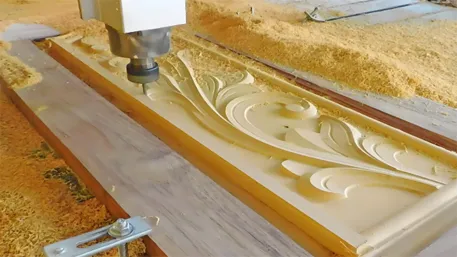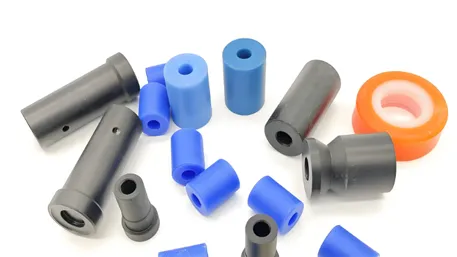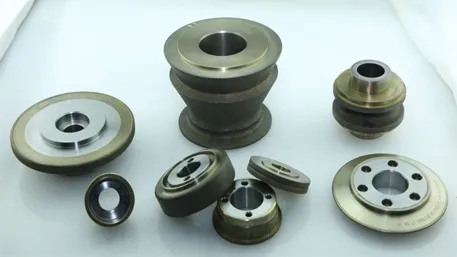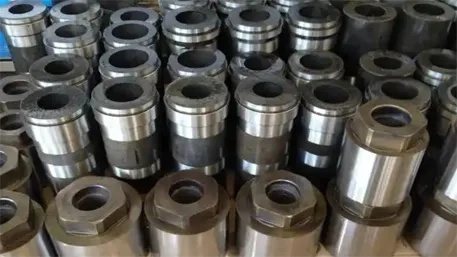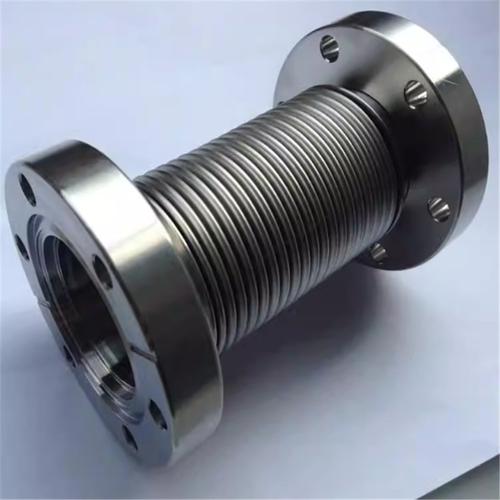Introduction
In the modern manufacturing landscape, CNC (Computer Numerical Control) machining stands as a cornerstone technology, revolutionizing the way products are crafted across diverse industries. Its influence is far – reaching, with applications spanning from the tiniest components in consumer electronics to the colossal parts used in aerospace engineering.

For instance, in the automotive industry, which produces millions of vehicles annually, CNC machining is crucial for manufacturing engine blocks, transmission components, and precision – engineered parts. These parts require tight tolerances to ensure optimal vehicle performance, fuel efficiency, and safety. According to industry reports, over 80% of automotive parts with complex geometries are now produced using CNC machining. This not only guarantees high – quality and consistent parts but also significantly boosts production efficiency.
In the aerospace sector, where precision and reliability are non – negotiable, CNC machining plays an even more critical role. Aircraft engines, for example, are made up of thousands of components, many of which are manufactured with CNC machines. These components need to withstand extreme temperatures, high pressures, and constant vibrations during flight. The high – precision capabilities of CNC machining enable the creation of parts that meet these stringent requirements. A single large – scale aerospace manufacturer might use CNC machines to produce tens of thousands of parts each year for its fleet of aircraft.
Given its extensive applications and profound impact on manufacturing efficiency and product quality, it’s essential to explore the ins and outs of CNC machining, from its fundamental principles to the latest technological advancements.
What is CNC Machining?
Definition and Basics
CNC, short for Computer Numerical Control, represents a revolutionary leap in the field of machining. In essence, CNC machining is a subtractive manufacturing process that uses pre – programmed computer software to control the movement of factory tools and machinery. This technology enables the production of highly precise parts and components by removing material from a solid block, known as the workpiece.
For example, in a traditional machining process, a machinist would manually operate a lathe or a milling machine, relying on their physical skills and experience to shape a part. This process was often time – consuming and had a relatively high margin of error, as it was subject to human fatigue and imprecision. In contrast, CNC machining allows for the automation of these tasks. A programmer writes a set of instructions in a specific programming language, such as G – code or M – code. These codes are then fed into the CNC machine’s controller. The machine reads these instructions and precisely controls the movement of the cutting tools, spindle speed, feed rate, and other parameters. This results in parts that are not only highly accurate but also highly repeatable. For instance, a CNC – machined part can have tolerances as tight as ±0.001 inches, which is far beyond the capabilities of most traditional machining methods.
Key Components of a CNC Machine
Control System:The control system is the “brain” of a CNC machine. It consists of a computer and specialized software. The computer interprets the CNC program, which is typically written in a language like G – code. G – code is a set of alphanumeric instructions that tell the machine how to move the axes, control the spindle speed, and perform other operations. For example, a G01 code in G – code is used for linear interpolation, which means the machine will move the tool in a straight line from one point to another at a specified feed rate. The control system also has interfaces to communicate with other components of the machine, such as the driver units, and can be connected to external devices like CAD/CAM software for program transfer and editing.
Machine Body:The machine body serves as the physical framework that supports all the other components. It is typically made of high – strength materials like cast iron or steel to ensure stability and rigidity during the machining process. The rigidity of the machine body is crucial because it helps to minimize vibrations and deflections, which can affect the accuracy of the machined parts. For example, in a CNC milling machine, the machine body houses the spindle, the worktable, and the column. The worktable is where the workpiece is mounted, and it can move in multiple axes (usually three – linear axes: X, Y, and Z) to position the workpiece relative to the cutting tool.
Drive Units:Drive units are responsible for converting the electrical signals from the control system into mechanical motion. They typically include servo motors or stepper motors. Servo motors are more commonly used in high – precision CNC machines. These motors are equipped with encoders that provide feedback to the control system about the position and speed of the motor shaft. This feedback allows the control system to precisely adjust the motor’s operation to achieve the desired movement of the machine axes. For example, if the control system sends a signal to move the X – axis by a certain distance, the servo motor will rotate, and the encoder will continuously report the actual position of the axis. If there is any deviation from the desired position, the control system can correct it in real – time. Stepper motors, on the other hand, move in discrete steps and are often used in less – precise applications or in some lower – cost CNC machines.
Types of CNC Machining
CNC Milling
CNC milling is a highly versatile machining process. It involves the use of a rotating multi – tooth cutting tool to remove material from the workpiece. The cutter can move in multiple axes (commonly three linear axes: X, Y, and Z, and sometimes additional rotational axes), enabling the creation of complex geometries.
One of the key features of CNC milling is its ability to machine various shapes of planes, contours, and cavities. For example, in the production of mold components, CNC milling can be used to create intricate cavity shapes with high precision. A mold for plastic injection might have complex undercuts and detailed surface features. CNC milling can accurately machine these features, ensuring that the final plastic parts produced from the mold have the desired shape and dimensional accuracy.
Commonly used milling tools include end mills, which are cylindrical cutters with cutting edges at the end and on the sides. They are suitable for a wide range of operations such as slotting, contour milling, and pocket milling. Ball – nose end mills, with a spherical cutting tip, are often used for machining curved surfaces, like those found in the automotive industry for manufacturing engine components with complex curvatures. Face mills, on the other hand, are used for machining flat surfaces. They have a larger diameter and multiple teeth, allowing for efficient material removal and high – quality surface finishes. For instance, in the production of large – scale metal plates used in construction machinery, face mills can quickly machine the flat surfaces to the required specifications.
CNC Turning
CNC turning is a machining process specifically designed for manufacturing rotary parts, such as shafts and disc – shaped parts. In a CNC turning operation, the workpiece is clamped onto a spindle and rotates at a high speed. A cutting tool, which is held in a tool post, moves linearly along the axes (usually the X and Z axes in a two – axis lathe) to remove material from the rotating workpiece, gradually shaping it into the desired form.
The key parameters in CNC turning include the spindle speed, which determines how fast the workpiece rotates. A higher spindle speed is often used for materials that are easy to machine and when fine – finishing operations are required to achieve a smooth surface finish. However, for harder materials or when performing heavy – duty roughing operations, a lower spindle speed may be more appropriate to prevent overheating of the cutting tool and excessive tool wear.
The feed rate is another crucial parameter. It refers to the distance the cutting tool advances along the workpiece per revolution of the spindle. A proper feed rate ensures efficient material removal while maintaining the quality of the machined surface. If the feed rate is too high, it can lead to poor surface finish, excessive tool wear, and even breakage of the cutting tool. Conversely, if the feed rate is too low, the machining process becomes time – consuming and uneconomical.
The depth of cut is also significant. It represents the amount of material removed in a single pass of the cutting tool. During roughing operations, a larger depth of cut can be used to quickly remove a significant amount of material. But during finishing operations, a smaller depth of cut is required to achieve the final dimensional accuracy and surface finish.
Operation essentials, accurate workpiece clamping is essential. The workpiece must be firmly held in place to prevent vibrations and ensure accurate machining. Additionally, proper tool selection is crucial. Different types of cutting tools, such as carbide – tipped tools for machining hard metals and high – speed steel tools for softer materials, are used depending on the workpiece material and the machining requirements. Regular tool monitoring and replacement are also necessary to maintain the quality of the machined parts. For example, in the production of automotive engine crankshafts, which are complex shaft – like components with high – precision requirements, CNC turning plays a vital role. The precise control of spindle speed, feed rate, and depth of cut, along with proper tool selection and workpiece clamping, ensures that the crankshafts are manufactured to the exact specifications, meeting the high – performance demands of the automotive engine.
Conclusion
CNC machining has indelibly transformed modern manufacturing. Its high – precision capabilities have enabled the production of components with tolerances that were once unimaginable, ensuring the reliability and performance of products in industries such as aerospace and automotive. The efficiency gains from automation and continuous operation have not only increased productivity but also reduced production costs, making high – quality products more accessible to consumers.
The versatility of CNC machining, with its various types like milling and turning, has made it suitable for a vast array of applications, from small – scale consumer electronics to large – scale industrial machinery. As technology continues to advance, such as the development of multi – axis machines and the integration of AI, the future of CNC machining holds even more promise. It will likely play an even more significant role in emerging industries, further driving innovation and economic growth in the manufacturing sector.

